

Short answer: No. At least, not like AQW and our other web games.
Let me just get this out of the way first... AQ3D WILL have updates. We will be working hard and adding new functionality to AQ3D, like the things I discuss on our Wish List in THIS post. We will be adding new areas, new adventures, new classes and of course new items and weapons, just like all of our games. We just won't be able to add them on the same scale and scope as the AQW releases.
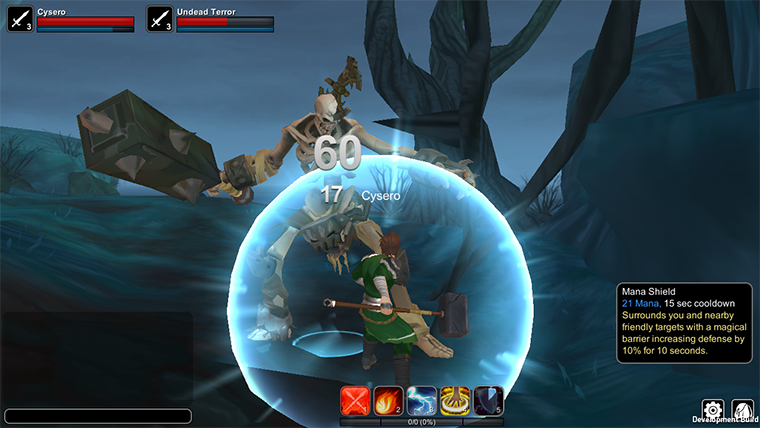
What does that mean? They will be smaller updates and, while we will be posting them regularly, they probably won't be weekly.
To really answer this question we need to talk about the differences between how we built our web games like AQW and how we are building AQ3D.
First, let's talk about Adobe Flash. All of our web games so far have been built using Adobe Flash. All of the art, animation and even the engine itself has all been created in Flash. Flash has some serious drawbacks, but for making a 2D web game, there was no better tool which was why Artix chose it to build the original AdventureQuest and all of its children.
With a few exceptions, pretty much everything could be done right in Flash. An artist could take a concept for an item and draw and color it directly in Flash then export it and it would be done. Even monsters, cut-scenes, classes with combat effects built into them and player models can be animated in Flash. Once the exported files are uploaded to the live servers, and given a database entry, they were ready to be dropped onto a monster, quest or into a shop.

At this speed, making 2D art, we have been able to keep up a frantic pace of updates for YEARS. Some people complain that the adventures are too short and can be completed in 10-15 minutes, but when you think about it... no other game company out there was able to add whole new areas, items, classes, monsters, cut-scenes and more every single Friday for multiple games, 52 weeks a year for more than 13 years (AE was formed in 2002). All game development moves at stressful and sometimes dangerous speeds, but no other company out there can hold a candle to what we we've been able to manage. It's insanely hard work getting all this done for you in this kind of time-frame, but we get it done.
There are a few major differences but they change everything.
AQ3D is a 3D game (as opposed to our 2D web games).
AQ3D is a mobile game.
First let's talk about the process of developing content for a 3D game. It's not just as simple as drawing something in a 3D program.
The first step is modeling. Whatever you're making, from the most simple prop, to an impressive weapon, to a fully animated enemy, has be built by the 3D modeler (in this case either Xero, Llussion or Oishii). They can't just break out Maya or 3D Studio Max and just whip something up, either. They need to keep in mind that this object will be for a mobile game, which means they need to keep the geometry very simple while still looking pretty great. Fewer vertices and faces on the models mean smaller file size to be crammed onto your phone or tablet, which means we can fit more and load it faster.

Once the model has been made, it has to be "unrwapped". This is taking the existing model, unwrapping the geometry and laying it flat. This is so that the artist who is painting the texture (Xero, Dage, Thyton, Llussion, Oishii or Circa) knows what to paint where.

Next, the texture needs to be painted. Since we need to save space, we can paint several textures for a single sword model. This painting is usually done in Photoshop. Once the texture is applied, any changes are made. Details might be added or removed or fixes might need to be done to areas where the wrap-around texture doesn't meet and loop smoothly.
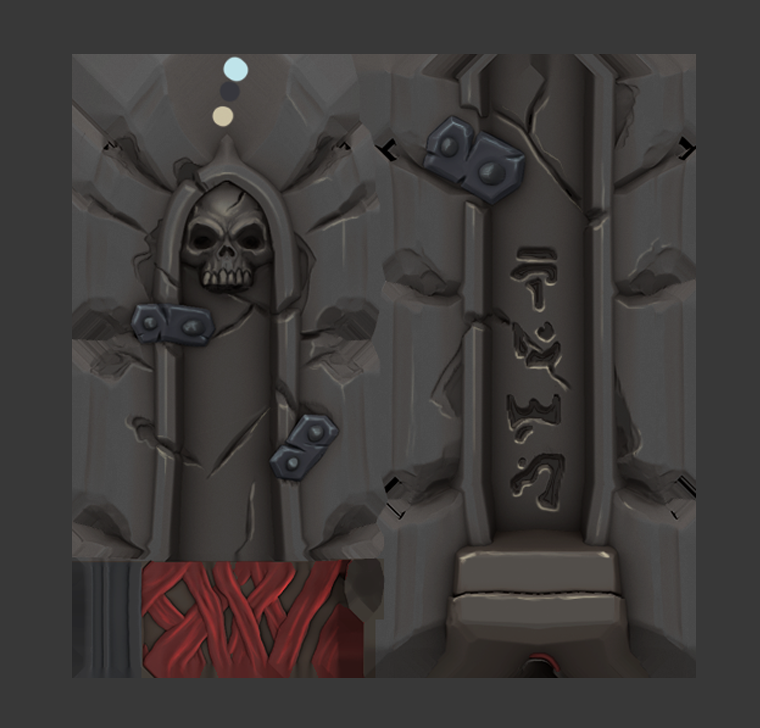
After this, the model is exported to Unity3D where it will have a material applied. The material can define a lot about how the object appears in the game. The material can define how shiny or dull the texture is, it can composite separate textures on top of each other, it can tell the game how the object reacts in different lighting, or if parts of it are transparent or tint the color of the item or a hundred other things. Sometimes when we don't have something to do the job, someone will have to code a whole new shader just to do a specific job.
After all this is done, the object gets entered into the database and given a name, description, stats, a price and anything else other than the art itself. Now our hypothetical item is ready to go!
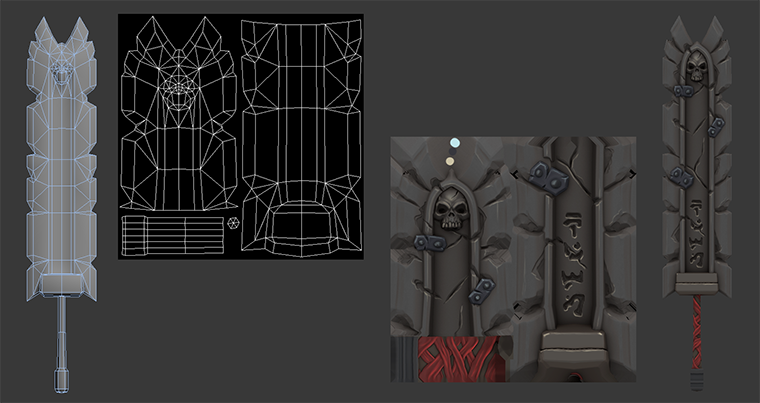
But wait... there's more.
What if we're creating a monster or player model? It needs to be animated. Unfortunately we can't just break the art apart and animate it like a paper doll like we do in Flash.
Before it can be animated, it needs to be "rigged". This means going through the process of giving the monster or player a series of bones that work a lot like the bones in your body. This way the model knows where it should bend. It takes some trial and error to get the bones just right so the hips and arms move in a realistic way (or if it's an unrealistic monster like a slime blob, then it needs to move in a cool and fun way). This duty usually falls to Korin, our lead 3D animator and he usually does this in a program called MotionBuilder.
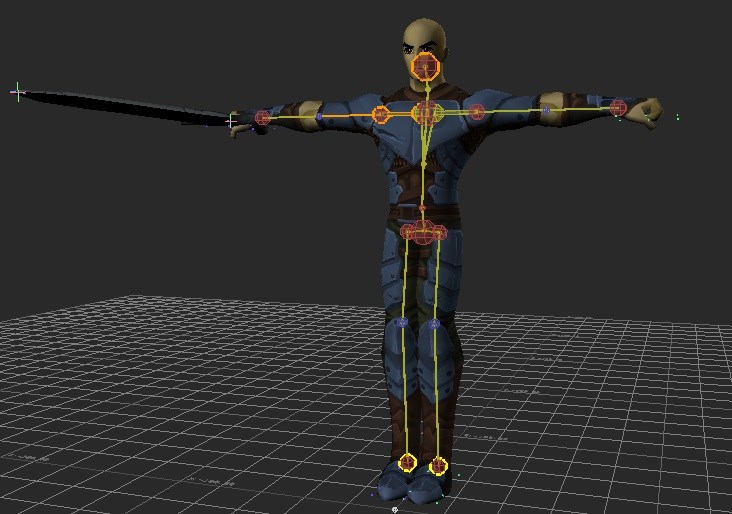
After that, the animation begins with a process called "skinning". Boiled down, this is when you tell which part of the texture goes on which part of the model, so you don't get weird areas of texture clumping or weird stretching at joint.
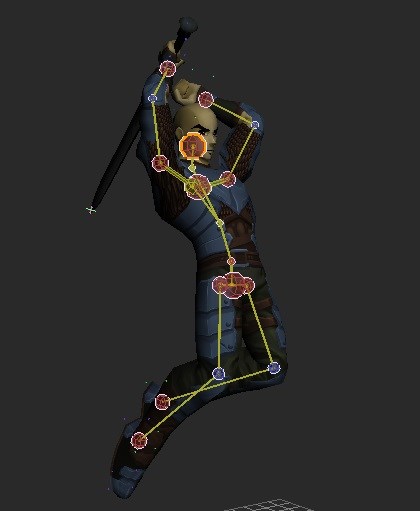
This is usually where animation really begins. This is a process that involves a lot of trial and error. You need to play through animations over and over and over and over and over and look at them from every angle to make sure it looks right. Looking "right" can mean a lot of things, depending on how the monster or player model is supposed to look and interact with the 3D world. It can take a very long time and is nowhere near as simple as animating 2D characters.
Nope. The same process goes for all environments and then you need to consider other factors like how angular areas are for climbing and where the lighting is coming from. Models need to be modeled, textured and placed for special quests where you interact with the environment (all usually done by Lead Environment Artist Llussion in 3D Studio Max with textures painted in Photoshop before being imported to Unity for lighting and nav mesh generation).
Then there's combat effects which are usually particle effects crafted by Yergen in Unity3D and applied to the combat flow by Lead Programmer Zhoom.
Also, let's not underestimate how much more work it is to code a 3D game engine from scratch (Mostly Zhoom with some help from Rolith and Warlic) with issues that we've never had to worry about before, including physics.
Don't forget about Sound Effects and music crafted by Coder/Musical Mastermind Warlic before Zhoom applies them where they need to go. Then, of course, there are the quests which are imagined, written and entered into the database by yours truly, but these last few parts actually do work pretty much the same as they did in AQW.
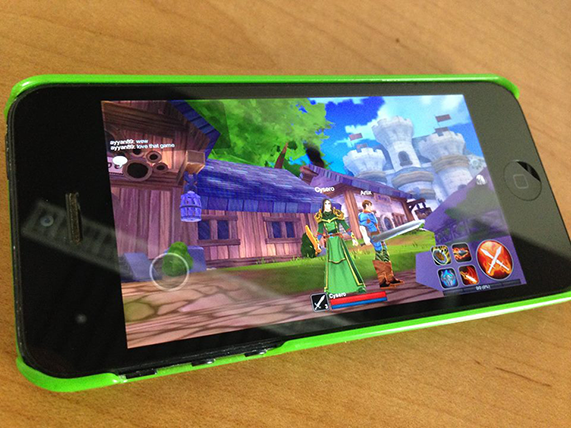
Glad you asked.
One of the great things about making games for the web is that we could make changes on the fly, upload them to the live servers and restart the game. Poof... new stuff. If a hot fix is needed then, as soon as we find the issue, we can post a fix.
Making games for mobile is significantly more difficult. We have to package the entire thing for EACH PLATFORM (iOS, Adroid with more platforms coming later) which means that some bugs will only happen on one platform or the other which makes tracking the bug down harder and also means double the amount of bugs. Then posting a fix can take DAYS to actually make it to the game, depending on the platform. Full content updates might take a full week before they get approved and rolled out. This means that we can't play fast and loose with anything. We have to get as much right before it goes out as possible on as many devices as possible, so that means longer testing times too.
TLDR: Everything about making a 3D mobile game is more difficult and takes much longer to make and test. That is why you won't see the kind of weekly updates that you're used to from AQW and some of our other games in AQ3D.
I'd like to thank all the Alpha Testers who are helping us find bugs and get this thing as stable as we can before we release it into he mobile world in Open Beta, and wish our dedicated AQ3D Testing team good luck in tracking down every bug, glitch and weirdness that they can.
This game is going to be amazing, but just like AQW and our other games... when we first release it, there won't be a lot in the game except limitless potential. Together, we will build it and play it and make changes as we go to improve it. I'm glad that you could join this adventure are the very beginning, here on the first page of the story.
Once upon a time...

Official Twitter of AQ3D
Pun-slinging Paladin
Undead Legion Ruler
Scribble Scribe
Dawnforger